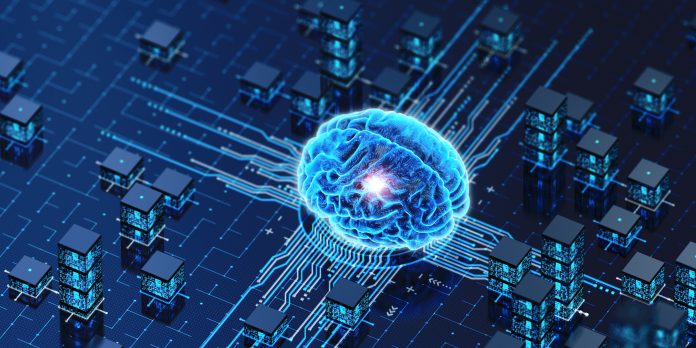Researchers demonstrate the impact of imposing physical limits on an Artificial intelligence system, similar to the human brain, which must evolve and function within physical and biological limitations
Researchers from Cambridge have demonstrated that imposing physical constraints on an artificial intelligence system, similar to how the human brain functions within physical and biological limitations, enables it to acquire characteristics resembling those of the brains of complex organisms when addressing tasks.
Brain-like structures in AI
As neural systems, including the brain, undergo self-organisation and establish connections, they must navigate competing requirements. Balancing factors such as energy and resources is essential for both the growth and maintenance of the network in physical space while simultaneously optimising it for efficient information processing.
This delicate trade-off influences the organisational patterns of all brains, regardless of species, and may provide insight into the commonality of organisational solutions observed across diverse brain structures.
Physical constraints in Artificial Systems
In a recent study published in Nature Machine Intelligence, Achterberg, Akarca, and their team have devised an artificial system to emulate a basic model of the brain, incorporating physical constraints.
Unlike real neurons, their system employed computational nodes with similar input-transformation-output functions and interconnectivity. The researchers introduced a ‘physical’ constraint by assigning each node a specific location in a virtual space, mirroring the organisation of neurons in the human brain.
The distance between nodes affected communication, making it more challenging for nodes farther apart to interact, similar to the spatial arrangement of neurons. The team tasked the system with simple maze navigation, reminiscent of challenges presented to animals like rats and macaques in brain studies.
Learning in constrained environments
Under these constraints, the artificial system exhibited key characteristics and problem-solving strategies reminiscent of those observed in human brains.
The chosen task required the artificial system to maintain various elements—start and end locations and intermediate steps. As the system learned the task, different nodes became crucial at different stages, encoding information like finish locations and available routes.
Initially prone to errors, the system improved through feedback, adjusting the strengths of connections between nodes, analogous to how brain cell connections change during learning.
However, the introduced physical constraint, mimicking the costliness of forming distant connections in the human brain, made it challenging for nodes far apart to establish connections based on feedback. To overcome this, the artificial system developed hubs—highly connected nodes facilitating information transfer across the network, a strategy akin to real human brains.
Strategies in AI networks
Individual node responses evolved. Instead of each node exclusively coding for one maze property, nodes developed a flexible coding scheme. This meant a single node could fire for various maze properties at different times, showcasing adaptability. This flexibility, observed in complex organisms’ brains, emerged as the artificial system tackled the task under physical constraints.
The researchers are optimistic that their AI system has the potential to offer insights into how such constraints influence variations in individuals’ brains, contributing to disparities observed among those facing cognitive or mental health challenges.
Efficient AI systems
The results are expected to capture the attention of the AI community, offering opportunities for enhancing more effective systems, especially in scenarios where physical constraints are a significant factor.
Numerous contemporary AI solutions employ architectures with only surface-level resemblance to the human brain. The researchers argue that their work demonstrates how the nature of the problem being tackled influences the optimal choice of architecture for AI systems.
This implies that robots handling substantial and dynamically changing information within limited energy resources could derive advantages from possessing brain structures like ours.











